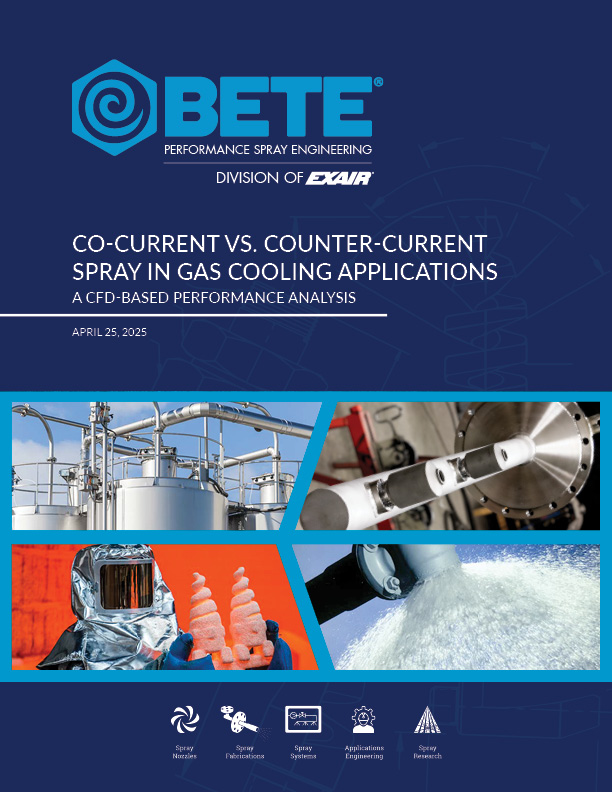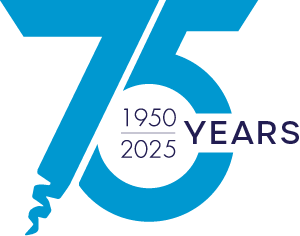White Paper: Co-Current vs. Counter-Current Spray in Gas Cooling Applications

Cooling hot gas is necessary in many industrial processes to protect equipment and ensure employee safety. Daniel deLesdernier, Advanced Spray Engineering Services Manager at BETE, presents a computational fluid dynamics (CFD)-based analysis of co-current and counter-current sprays, offering considerations for those seeking to improve evaporation efficiency and minimize duct length in their gas cooling applications.
What will you learn?
- How spray direction affects droplet evaporation and heat transfer rates
- Performance differences between full cone and hollow cone nozzles
- The effects of spray orientation on convection and diffusion processes
- Key design considerations, including nozzle placement, pressure drop, and risk of clogging
About the Author

Daniel deLesDernier has worked for BETE for over 30 years and, for the past 25 years, has led BETE’s spray laboratory, specializing in the experimental evaluation and development of spray solutions across various industrial processes. Supporting such a broad range of fields is what Daniel enjoys most about working at BETE.
As a graduate of the University of Massachusetts Amherst as a mechanical engineer with a concentration in thermal fluids and energy conservation, Daniel is committed to engineering, problem solving, and technical collaboration. He has played a key role in the success of BETE’s Advanced Spray Engineering Services (ASES) department, founded over a decade ago to work closely with customers on process-critical spray applications. By integrating physical testing, modeling, and design, ASES ensures each solution aligns with the customer’s process constraints and performance goals — helping mitigate risk and improve outcomes.
In his free time, Daniel enjoys traveling throughout Europe with his family and participating in recreational activities such as kayaking, bicycling, running an occasional road race, and flying. He is a Civil Air Patrol (CAP) mission pilot with over 30 years of flying experience.






